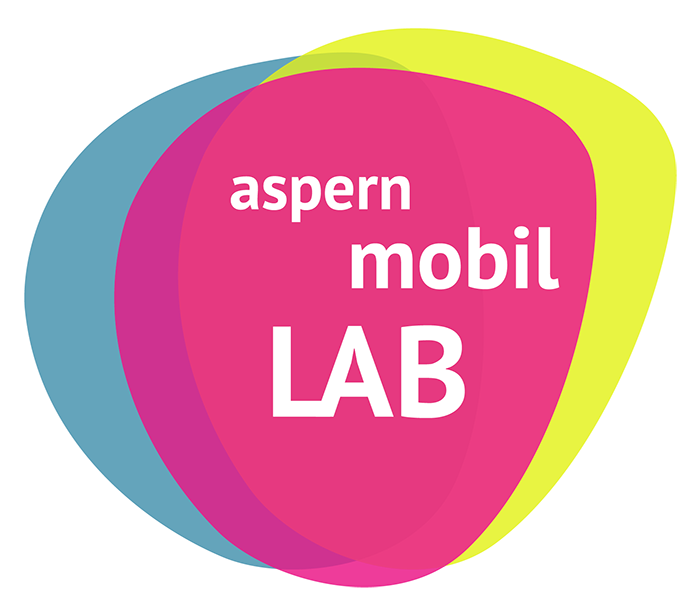University in aspern Seestadt – final presentations and demonstration of the results
End of semester event
We are pleased to invite you to the final presentations and demonstrations of our student projects on Wednesday, 25.01.2023 at 17:00!
Drop by and see the results of our ‘Media Informatics’ students from the “Design Thinking” course on current topics such as climate change, urban gardening and soil sealing from the winter semester 2022/23 that is coming to an end!
On Wednesday, you will have the opportunity to learn more about the students’ work, exchange ideas and give feedback. Furthermore, you can test prototypical solutions of the students from the course “Media and Human Centered Computing” yourself!
Therefore, it’s definitely worth taking part!
About this year’s student projects
- Educational Augmented Reality (AR) Playground:
The idea is to develop an educational AR playground with physical boxes equipped with AR markers over which visitors can move on a level. The AR aspect consists of a simulated city in which the boxes represent buildings. The users can change the design of the playground individually in the AR: they can draw ground characteristics of their choice, add shade trees and the like. After the adjustments, the design can then be evaluated in terms of heat distribution. - Discovering Seestadt – Beyond the ordinary way:
We are developing a game for young adults who live outside of Seestadt. The main reason is that many people in Vienna don’t know much about Seestadt and its interesting sustainability projects. That is why we want to raise awareness. In interviews with experts, we identified different narrative styles in game design. After discussing the various advantages and disadvantages of the different styles, we came to the conclusion that we will use an emergent narrative for our storyline. The main reasons for this are the resulting replayability of the game and the power of the player’s decisions to change the course of the story. Finally, we have decided not to control the game via smartphones, but via public displays and perhaps additional touch displays (“pervasive screens”) and props. - SolusOasis:
This project aims to create an artefact that empowers communities with a strong emphasis on sustainability. For example, the device can include public displays linked to smartphones for interaction within a community. Playful approaches can be used to connect people and interact with the system together. The whole device should be powered by renewable energy and use sustainable materials. - Teaching urban gardening interactively to children:
With our system, we aim to familiarise children of the Seestadt with topics such as climate change and gardening and to encourage them to acquire knowledge in these areas together with others. For this purpose, a public, interactive plant display is used, which can be used by several people at the same time and is specially designed for the target group. Plant interfaces, based on real plants, are novel interaction techniques that can encourage users to increase their empathy for plants. Beyond tactile plant elements, our system consists of a touch screen, and feedback is also provided in the form of audio to create an emotional connection. - Shaping your ‘Grätzel’:
To support residents’ participation in shaping their own public living environment, this project will develop an augmented reality (AR) application for smartphones that allows virtual objects to be placed in the real environment. This allows users to redesign public places and to freely express their ideas. The results can be saved as a photo and finally shared via social media channels, which should stimulate an exchange on the different ideas.
- “Ambient” – Experience and Design in Public Space with HoloLens:
The “Ambient” application makes it possible to design, change and visualise holograms in public spaces. This is done by using the Microsoft Hololens, augmented reality (AR) glasses. Holograms can include, for example, design ideas for public spaces, messages, artworks or other objects. Users can enter different AR worlds and try out and change different holograms. - Mental Health App:
Within the framework of this project, a Mental Health App for iOS and Android will be realised. The applications are intended to support people who suffer from panic attacks, etc., and are therefore limited in their (everyday) mobility. Through specific scenarios defined by users, the application can be regarded as a support to better master difficult situations. On the one hand, it offers structure for daily activities, but also opportunities for reflection and the celebration of personal mobility successes. - Community App:
The idea of this project is to realise an online platform where people can share what makes a neighbourhood – such as the Seestadt – great. Users can enter activities or “journeys” that take place in different places as stories or anecdotes and make them accessible to others. In doing so, interesting things can be learned about a neighbourhood, but also the exchange between users about these stories can be promoted.







